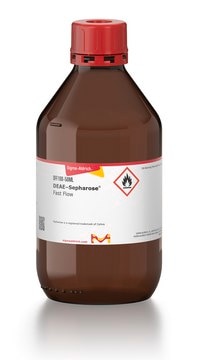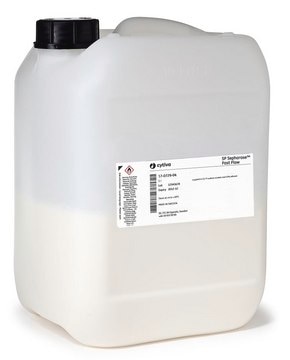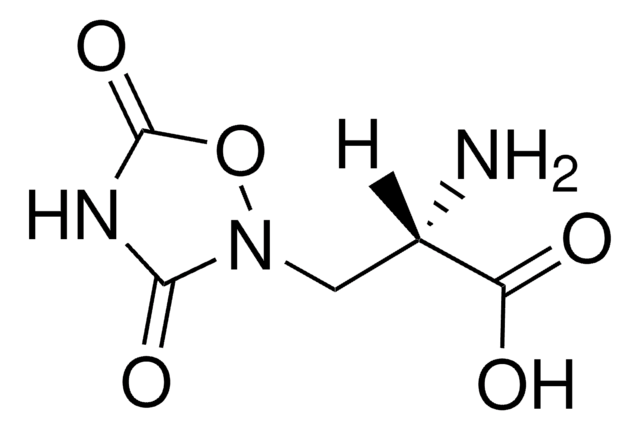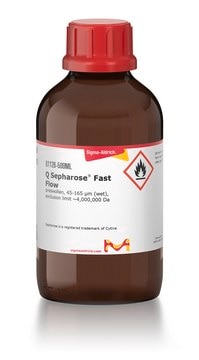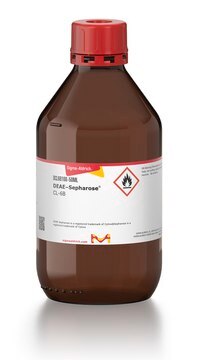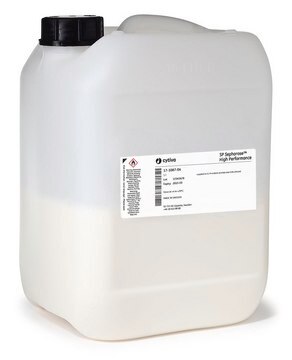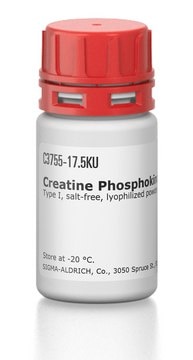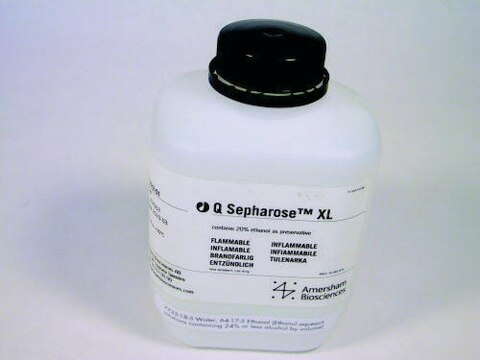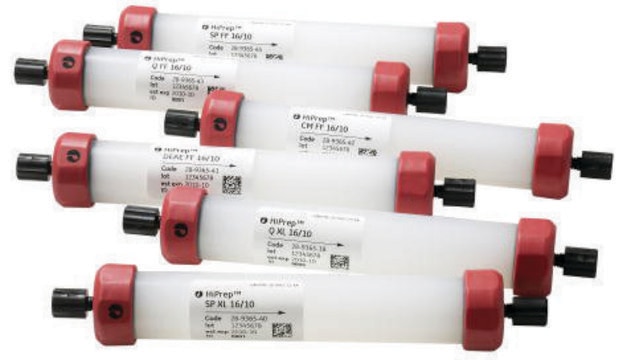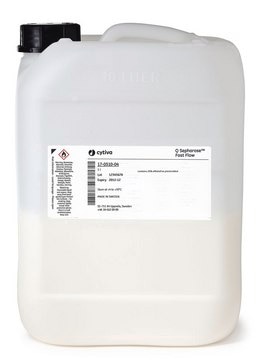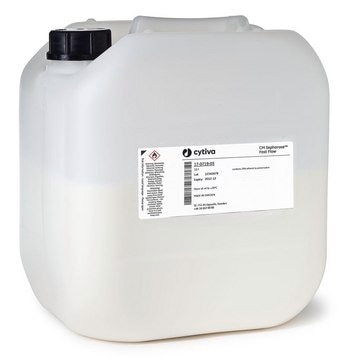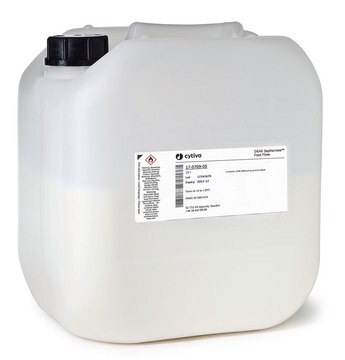S1799
SP Sepharose™
Fast Flow, aqueous ethanol suspension, 45-165 μm (wet), exclusion limit ~4,000,000 Da
Synonym(s):
Sulfopropyl-Sepharose™
Sign Into View Organizational & Contract Pricing
All Photos(1)
About This Item
Recommended Products
Quality Level
form
aqueous ethanol suspension
matrix active group
, —CH2-SO3-
particle size
45-165 μm (wet)
pore size
~4,000,000 Da exclusion limit
capacity
180-250 μeq/mL, gel
storage temp.
2-8°C
Looking for similar products? Visit Product Comparison Guide
Application
SP Sepharose™ is used in protein chromatography, ion exchange chromatography and cation exchange media. SP Sepharose™ has been used to study inhibitory proteins and peptides from the rhizomes of zingiberaceae plants as well as to study the subunit heterogeneity and molecular evolution of soybean basic 7S globulin. SP Sepharose™ has also assisted with advancing industrial applications of preparation of chitosan oligosaccharides.
Physical form
Suspension in 0.2 M sodium acetate and 20% ethanol
Legal Information
Sepharose is a trademark of Cytiva
signalword
Warning
hcodes
Hazard Classifications
Flam. Liq. 3
Storage Class
3 - Flammable liquids
wgk_germany
WGK 1
flash_point_f
100.4 - 109.4 °F
flash_point_c
38 - 43 °C
Certificates of Analysis (COA)
Search for Certificates of Analysis (COA) by entering the products Lot/Batch Number. Lot and Batch Numbers can be found on a product’s label following the words ‘Lot’ or ‘Batch’.
Already Own This Product?
Find documentation for the products that you have recently purchased in the Document Library.
Customers Also Viewed
Surachai Supattapone et al.
Methods in molecular biology (Clifton, N.J.), 459, 117-130 (2008-06-26)
The infectious agents of prion diseases are unorthodox, and they seem to be composed primarily of a misfolded glycoprotein called the prion protein (PrP). Replication of prion infectivity is associated with the conversion of PrP from its normal, cellular form
C Y Cheng et al.
Biotechnology and applied biochemistry, 32 ( Pt 3), 197-203 (2000-12-15)
A chitosan-degrading fungus, designated Aspergillus sp. Y2K, was isolated from soil. The micro-organism was used for producing chitosanase (EC 3.2.1.132) in a minimal medium containing chitosan as the sole carbon source. The induced chitosanase was purified to homogeneity from the
Andrei D Shutov et al.
Bioscience, biotechnology, and biochemistry, 74(8), 1631-1634 (2010-08-12)
Basic 7S globulin, a cysteine-rich protein from soybean seeds, consists of subunits containing 27 kD and 16 kD chains linked by disulfide bonding. Three differently sized subunits of the basic 7S globulin were detected and partially separated by SP Sepharose
Maneerat Yodjun et al.
Applied biochemistry and biotechnology, 166(8), 2037-2050 (2012-03-07)
Ammonium sulphate cut protein extracts, and their pepsin hydrolysates, from the rhizomes of 15 plants in the Zingiberaceae family were screened for their in vitro angiotensin I-converting enzyme inhibitory (ACEI) activity. The protein extract from Zingiber ottensii had the highest
James C Geoghegan et al.
The Journal of biological chemistry, 282(50), 36341-36353 (2007-10-18)
The central pathogenic event of prion disease is the conformational conversion of a host protein, PrPC, into a pathogenic isoform, PrPSc. We previously showed that the protein misfolding cyclic amplification (PMCA) technique can be used to form infectious prion molecules
Our team of scientists has experience in all areas of research including Life Science, Material Science, Chemical Synthesis, Chromatography, Analytical and many others.
Contact Technical Service